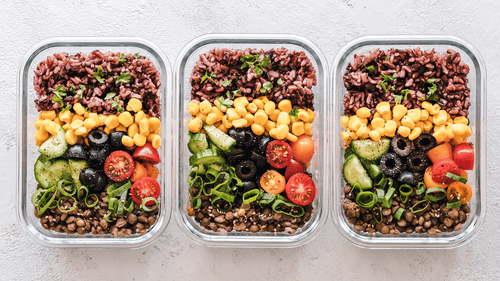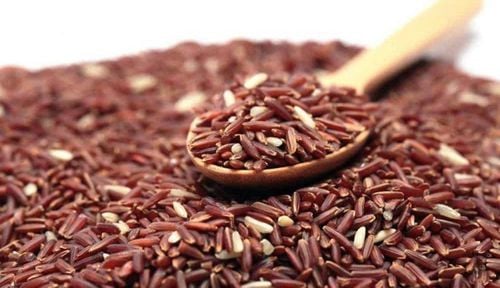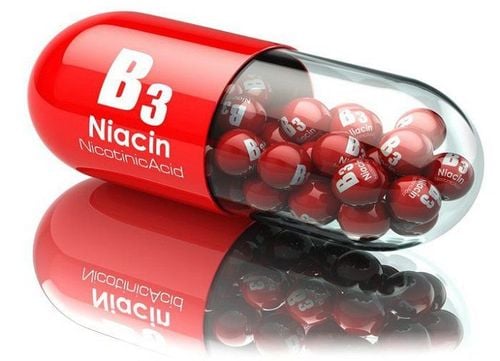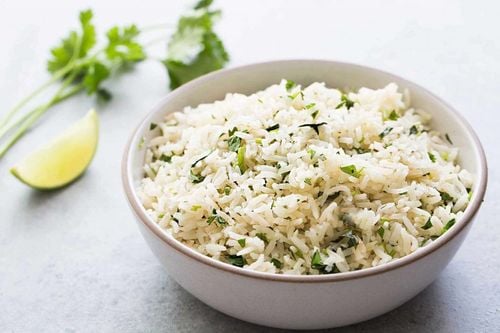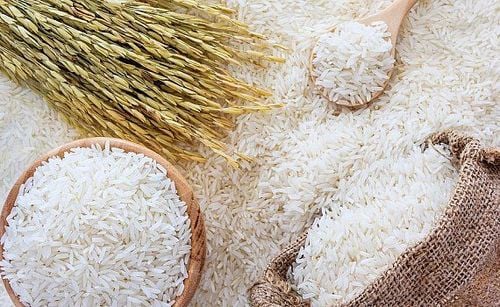This is an automatically translated article.
Not only has a beautiful color, purple rice also contains many nutrients such as: antioxidants, fiber, protein, iron, ... Eating purple rice will bring many health benefits.
1. What is purple rice?
Purple rice (purple rice) is a type of rice originating from Asia. Rice grains are as black as ink. When cooked, the rice has a deep purple color. Purple rice is also known as black rice, forbidden rice or imperial rice. Legend has it that since ancient times, purple rice was only offered to the ancient emperors of China. This may be because purple rice is rare and difficult to grow and care for.
Like other rice varieties, purple rice is derived from Japanese rice. It is estimated that purple rice may have been cultivated since 2500 BC. The purple rice grains may be the result of a mutated rice gene.
Purple rice has 2 forms: sticky rice and plain rice. Both forms are gluten-free.
2. Health benefits of purple rice
The real value of herbal purple rice lies in its nutritional composition. The nutrients found in purple rice include:
2.1 Antioxidants The color of purple rice is made up of a flavonoid called anthocyanin pigment. It is this pigment that also gives blueberries, eggplants and many other fruits and vegetables their bold color. Anthocyanins are phytochemicals found in plants. They have anti-inflammatory and anti-cancer properties. Powerful antioxidants like anthocyanins help reduce the risk of diabetes, heart disease, and obesity.
2.2 Fiber Purple glutinous rice is the whole grain - with the bran intact. Therefore, it is high in fiber and has a nutty taste. Fiber is important for bowel movements and bowel health, and it also helps with weight loss, cholesterol and blood pressure.
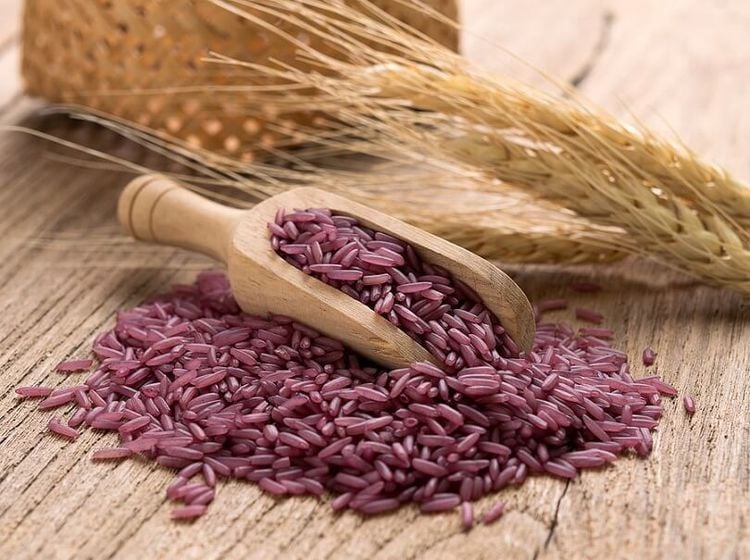
Chất xơ trong gạo tím nguyên hạt đem lại nhiều giá trị dinh dưỡng cho người dùng
2.3 Protein Purple rice is a great source of protein - a great addition to a vegetarian diet. The protein in purple rice helps reduce muscle loss by helping the body build and regenerate muscle tissue. It also helps to stimulate cell growth and keep bones strong.
2.4 Iron Purple rice is a rich source of iron. Iron is a mineral needed for the production of red blood cells and for the transport of oxygen. It also aids in the transmission of nerve impulses, which control body movements. If you have an iron deficiency, you may develop anemia.
3. Compare purple rice with other types of rice
In 1⁄3 cups of purple glutinous rice there are about 200 calories (however, calories may vary by brand). There are about 82 calories in 1⁄3 cups of brown rice. Like other forms of rice, purple rice is gluten-free.
Like brown rice, purple rice is a whole grain. Most of the fiber and nutrients are contained in the bran and germ of the rice. White rice is rice that has been refined so the bran and germ have been removed, making it less nutritious. So, from a nutritional point of view, brown rice and purple rice are better than white rice.
All types of rice are rich in carbohydrates. Diabetics should choose foods with a higher fiber source to reduce the impact of carbohydrates on blood sugar. Brown rice and purple rice have roughly the same amount of fiber, but they should only make up a fraction of your daily fiber needs. Recommended daily fiber is 20 - 25g for women, 30-40g for men. In addition to rice, you should add other types of fiber to your diet.
Purple rice is generally higher in iron than brown rice. Neither brown rice nor white rice contain anthocyanin pigments, which are high antioxidants found in purple rice. Brown rice contains antioxidants but not in as high levels as purple rice.
Both purple and brown rice contain small amounts of arsenic - a toxin that is absorbed from the soil where rice is grown. White rice is less susceptible to arsenic because its outer layer has been removed during the milling process. If you are concerned about arsenic in rice, wash the rice several times before cooking to remove this toxic component.
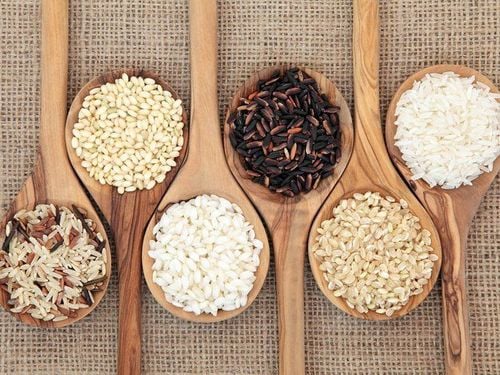
Gạo tím chiếm ưu thế về dinh dưỡng hơn một số loại gạo khác
4. How to use purple rice
To best absorb nutrients from purple rice, you can use purple rice as follows:
Wash the rice 3-4 times with cool water before use; Boil 1 cup of rice with 2.5 cups of water. You can also add 1 tablespoon olive oil (or butter) along with 1/2 teaspoon salt to enhance the flavor of purple rice cooked rice. In addition, you can also cook rice with chicken broth, vegetable broth or even coconut water for a sweeter taste; Put the rice in the pot, cover, and simmer until the water is almost gone. At the same time, stir the rice cooker continuously for about 20 minutes. Turn off the stove, leave the pot to cook, cover for another 5 minutes until the water is completely drained; Purple rice when cooked is still a bit hard. To make the rice more tender, you can cook for another 10 minutes, add 1⁄4 cups of water, cook over low heat. Purple rice can be used in any rice-based recipe, including stir-fries, rice balls, stews, and more. With a great source of nutrients, you can take advantage of it and replace it. change the taste for everyday dishes.
Please dial HOTLINE for more information or register for an appointment HERE. Download MyVinmec app to make appointments faster and to manage your bookings easily.
Reference source: .healthline.com



